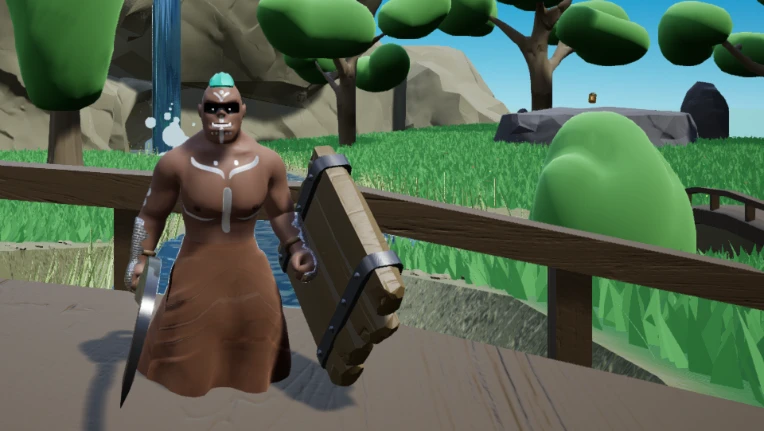
Bonegrinder is a game project that I worked on for quite a few years. The concept was to create a multiplayer, third person battle game where you’d join servers, pick a team and swing giant weapons around at each other. You’d play as orcs; fantasy creatures portrayed as overly violent brutes and pick a weapon class that would define your attack style. Each weapon would have 3 unique attacks, plus two universal attacks (shoulder bashes and drop kicks) and a standard roll dodge with i-frames. You also had an extremely clunky jump mechanic so that you could access different vertical levels to battle on and I even made catapults to launch orcs across the battlefield so that a select few could quickly join in the action.
The game was developed in Unreal Engine 4. Probably one of the most difficult problems I had to solve was how to implement lag compensation. My solution was to allow the user to play ahead of the server for basic movement but to make attacks and dodges behind the server with client side prediction. Any action had at least 0.1 seconds of start up which was used on the server to let the player skip ahead in their animation to compensate for latency and the lag couldn’t really be felt until around 200ms ping. So long as the latency was relatively stable, this worked really well.
Unfortunately, Bonegrinder did not and will never launch. After spending several years on it, I made the difficult call to throw in the towel and there are two reasons for that.
The first is that I just wasn’t happy with it. I couldn’t do large scale testing, so what kind of chaos would ensue on a full server just wasn’t predictable. The combinations of large hitboxes and big movement created an affect I called “jousting” where players could sometimes lunge past each other and both miss their attacks, of which I couldn’t figure a clear solution to. Most fighter games are based on a rock, paper, scissors system of counter actions, but mine only had two with attack and dodge. It would take a lot more time to develop more features. And any modern multiplayer features, like adding friends inside the game or being able to join a friend’s game, were outside my solo developer budget.
But the second reason was that I had no confidence in a sizable launch of the game, which a multiplayer game desperately needs in order to take off. If 30 people bought your game, you'd never be able to get a full server going and nobody would be having fun. If I’m selling someone a product, I need to be confident that I’m not wasting people’s time.
It was interesting to work in Unreal and it was fun to get to work in 3D. But it is also a lot more work to get models and environments going than it is to make 2D sprites. I went on to make Sanguine 3, which as a single player game, doesn’t need a player base to be an enjoyable experience. But it does sting having gotten so far with Bonegrinder and having it turn into dust in the wind.
DasSG
I guess that was a very educational experience. It's always sad to cancel the work you've spend much time on, but that's just the way life is. I have a whole book of game ideas and lots of unfinished prototypes on the HDD, some of them in Actionscript 3. They wouldn't see the light of the day for obvious reasons, but looking at them I wonder... did I really made them, how? It's a lot of work.